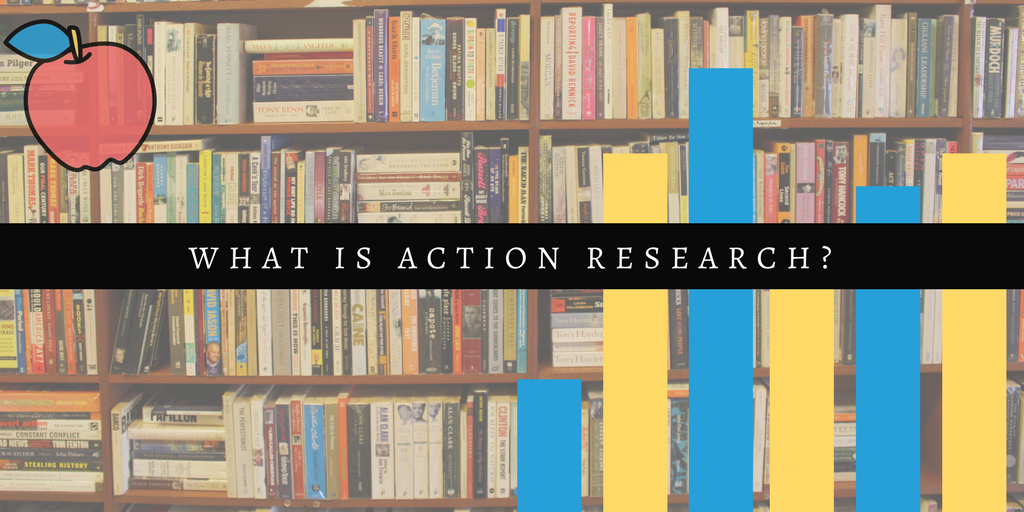
A&GC: What is an Action Research Project?
Action Research is something most teachers have done in one form or another, just without the title. A multi-step process that has you as the educator select a focus, develop a theory, implement while gathering research, and then analyse the results. I’ll be undertaking an Action Research Project (ARP) as the capstone project of my graduate program, blogging the progress of the course each week over the next few months.
![]()
What is Action Research?
The single most important aspect of Action Research is that the focus and ideas were thought up and implemented by the teacher in their own classroom. Different from quantitative studies where the researcher is impartial and removed, in an ARP you hold a dual role as both researcher and teacher. Due to this unique role it becomes impossible to absolve yourself from your work. What matters is how it works for you and your classroom, the results are a snapshot of progress (or the lack thereof) that you have made on an individual level; the results are not meant to extrapolate all classrooms in all schools. However, I believe this personal touch makes the research almost more meaningful and value to other educators. We all know the each school, classroom, and student is different and saying a certain method is the optimal way to approach something cannot be true for everyone. This is known as the “Myth of Average.” However might results might be meaningful to another, or inspiring and they can pick up the work where I stopped. Together teachers are collectively progressing all of education through these small individual studies in their own classrooms. Of the titular words, action is the most important in that you don’t stop teaching, or cancel learning, you rather are actively seeking ways to enhance and improve it.
 When constructing an ARP you can think of it as having seven looping steps.
When constructing an ARP you can think of it as having seven looping steps.
- Selecting a focus
- Clarifying theories
- Identifying research questions
- Collecting data
- Analyzing data
- Reporting results
- Taking informed action
The process is circular and how long each cycle lasts is up to you, the educator. Often a project contains many smaller cycles as part of a sing larger theory. You might move through steps 1-7 in a week, and find that the next methods had huge flaws and were ineffective, or they might have worked better than expected; either way you proceed to step 7 and “take informed action” about improving it or implementing it elsewhere.
The Arts a Path to Global Citizenship
The focus of my personal ARP is “Can the Arts be an effective path to Global Citizenship?” A difficult question to be sure, but an important one to me. This will be taught to mixture of about 30 students in a blended class of 7th and 8th graders. The course will take place over 10-weeks with students being surveyed at the start and end of every major unit; roughly 5 times. These small research cycles will allow me to assess what worked and what didn’t. The quick turnaround will allow me to alter materials to teacher to those specific students more effectively. I also will have a diverse group of 4-6 student who I will interview on a bi-weekly basis, to gain a more detailed and insightful look at how effective the course is. The ARP is a daunting but exciting endevor and one that I’m thrilled to be a part of. It’s also the capstone project of my MSTI Masters program from Northeastern Illinois University. A fantastic and functional program for existing teachers that allows the work I do at school and graduate school to seamlessly blend and benefit each other.
There are several key components we’ll need to cover as a class prior to starting projects. Questions for students like, “What does Global Citizenship really mean?” and questions for me like, “What is an effective path, and how will you assess effectiveness?” I know that I personally will be logging survey results, as well as recording the interviews from the focus groups, but also gather data on things like work completion and quality. The main projects of the unit are Global Lit Circles, Art Ambassadors, Confronting Stereotypes, and Art in Action. These will be supplemented by a number of supporting lessons that build the skills and knowledge students will need, as well guest speakers, and a very special performance by Crossing Borders Music.
Weekly updates on the progress of my Action Research Project, The Arts as a Path to Global Citizenship can be found here: http://asoundmind.edublogs.org/category/art-global-citizenship/
Tom Pringle March 18, 2021 - 12:48 am
I am so glad I found this. I am creating videos for Scottish pupils, aged 11-13 years, on sustainability. This week we explore global citizenship and social impact through the lens of the arts. My first qustion was the one you are exploring and illuminating.
Thank you!
Frank Cademartori March 18, 2021 - 7:10 pm
This is amazing to hear! I really believe in the power of the arts and would love to hear more about the work you are doing.